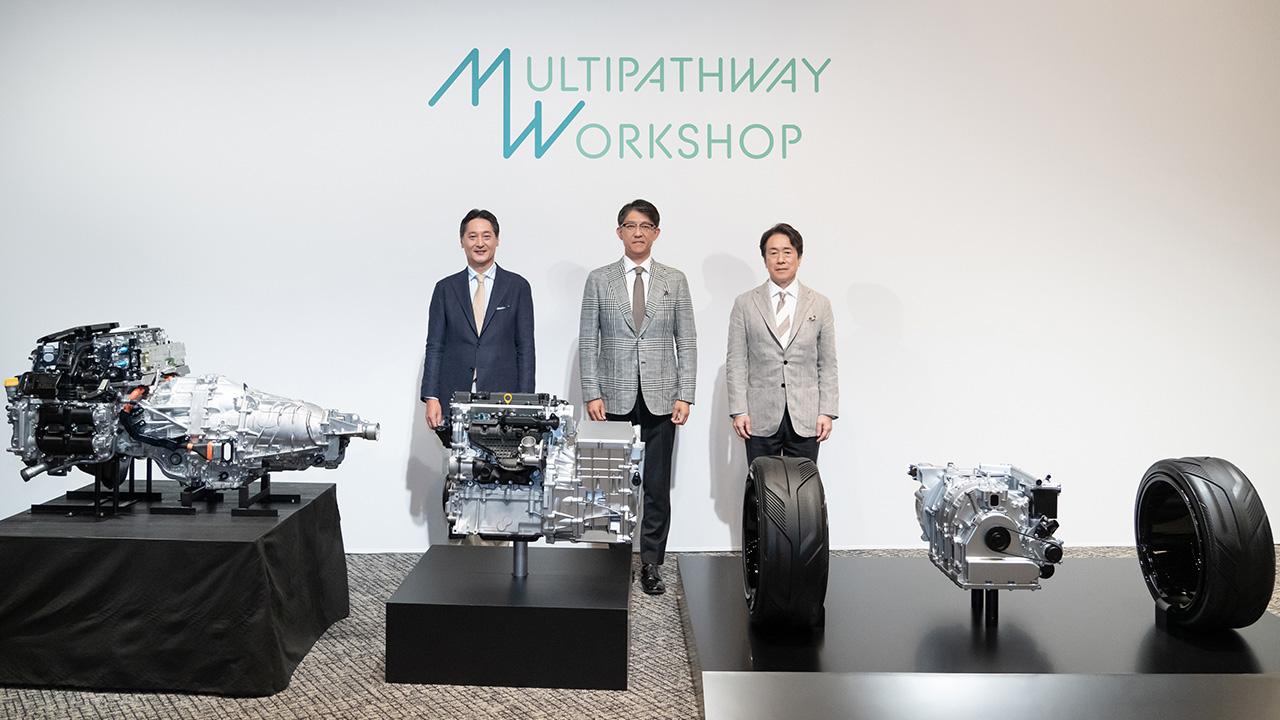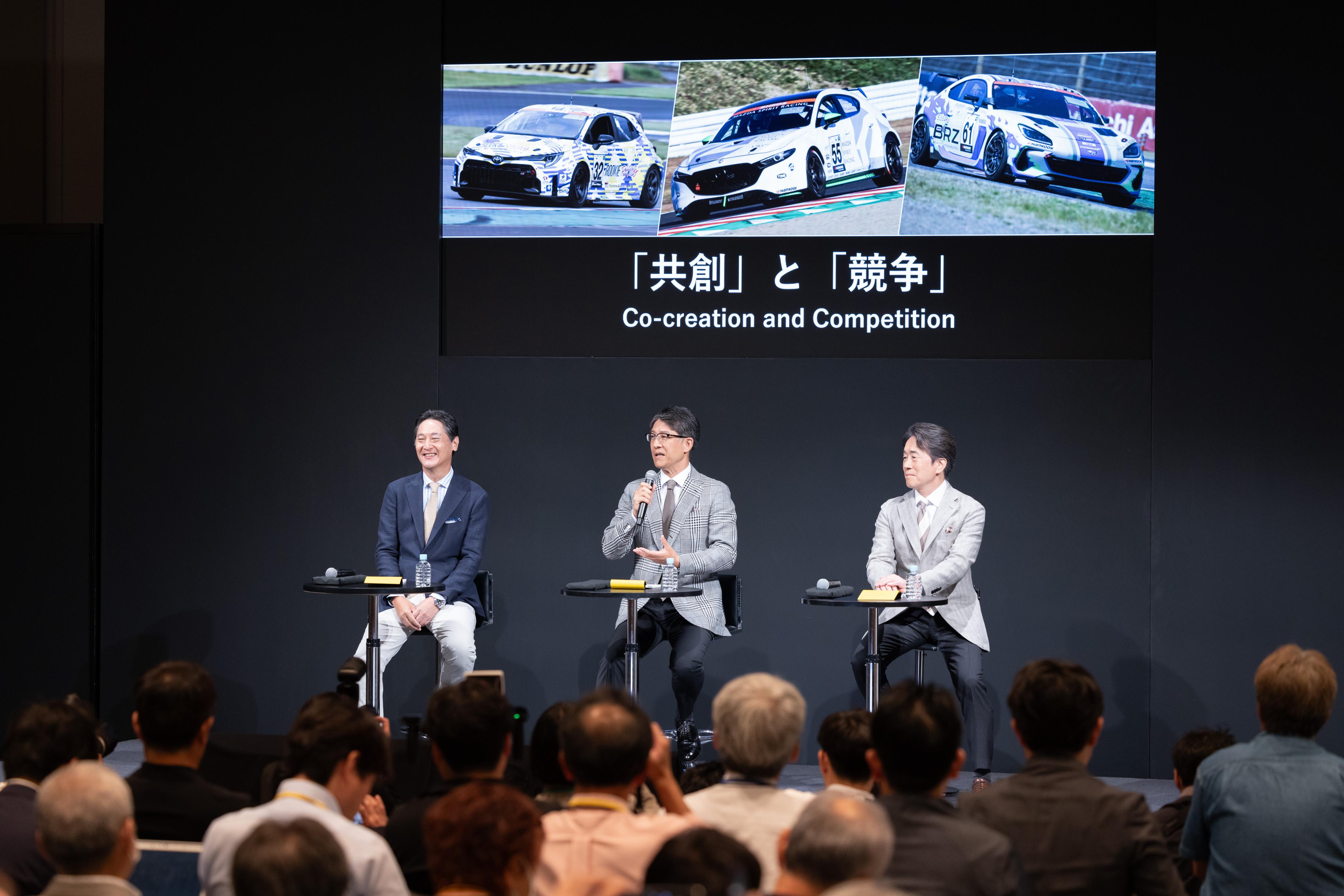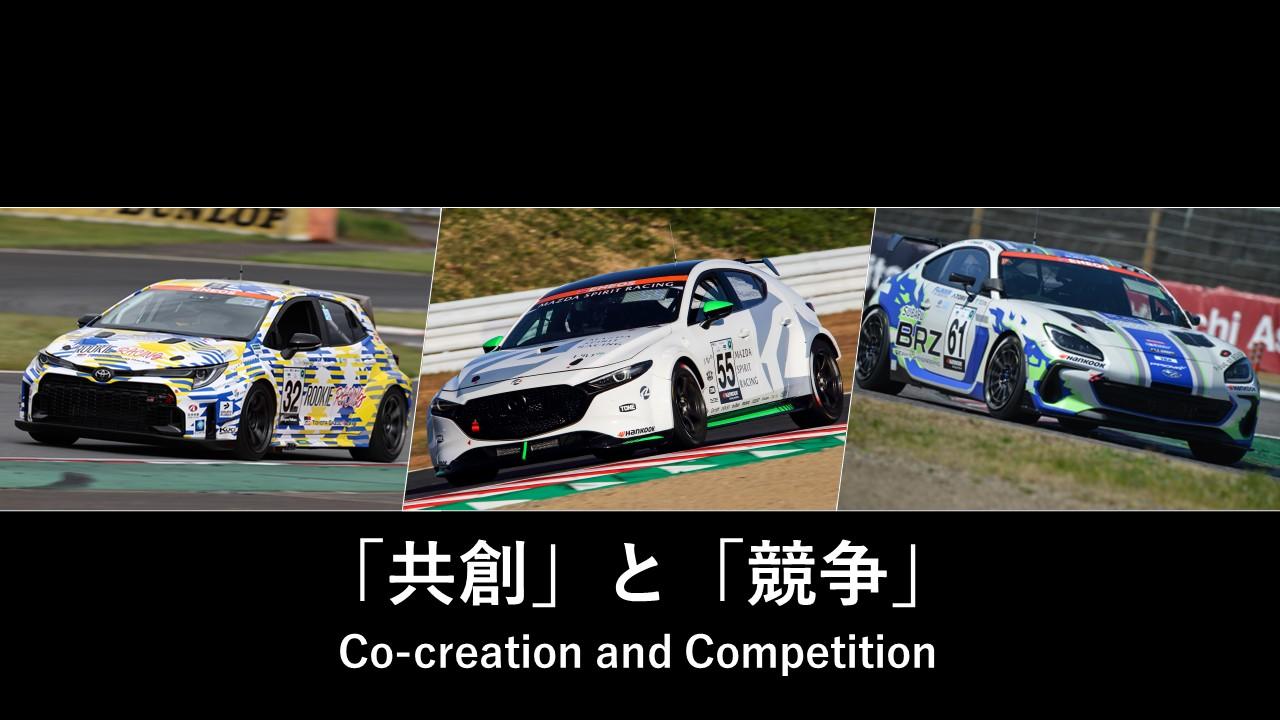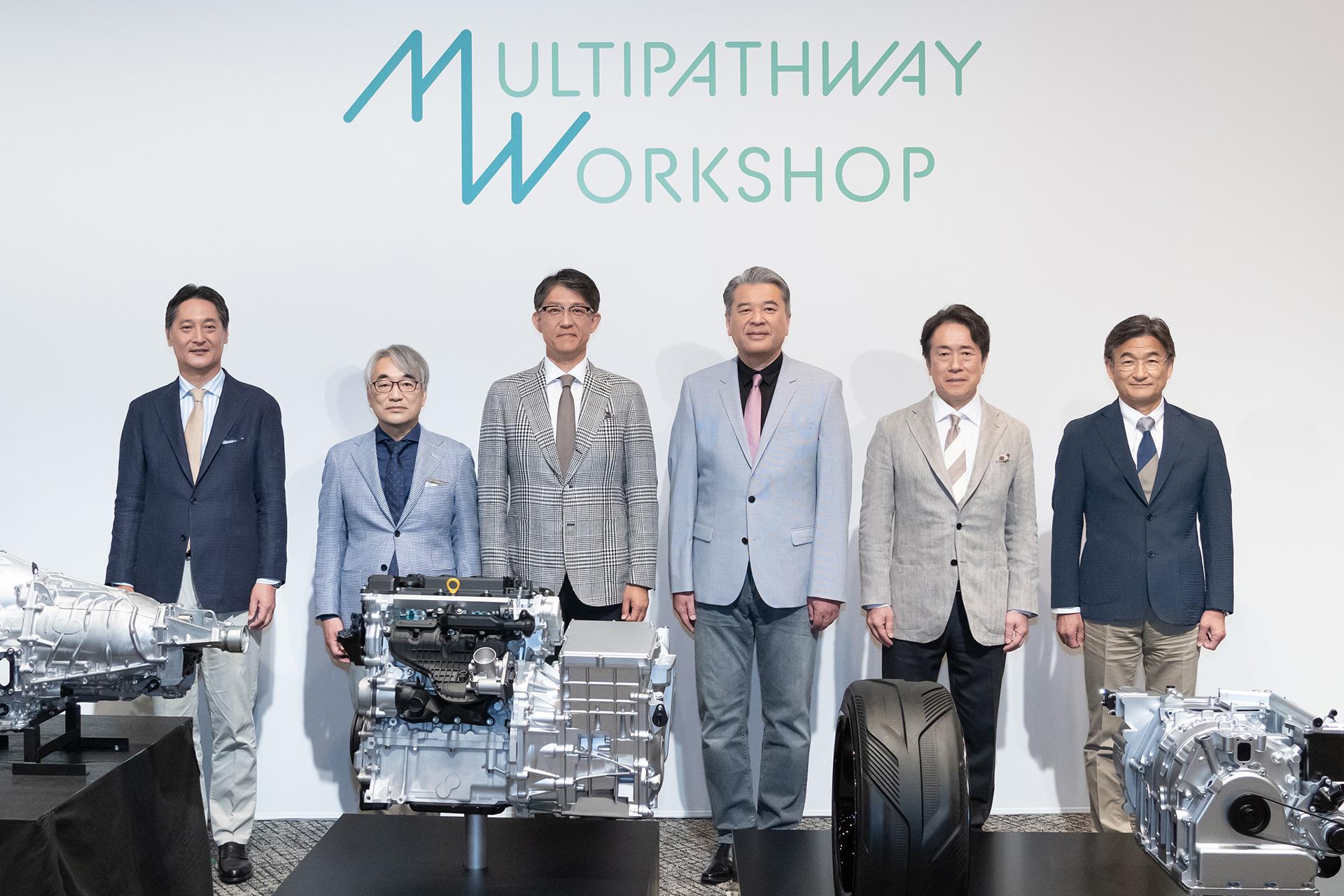
The three companies have long engaged in friendly rivalry over engines. Recently, their leaders came together to announce new developments for the electrification era.
Rivals with a shared purpose
These three speeches were followed by a Q&A session, with reporters asking about the impact on supply chains.

President Sato
I am here today because I believe the first step to creating the future is declaring our intended direction.
Together, we are committing to build a future for internal combustion engines.
The engine can’t survive in its current form. It needs to change. We cannot regard the internal combustion engine as a solution and then stop developing the technology.
I think as OEMs (car manufacturers) we must take responsibility and show what kind of future we are going to create, then work together to bring it about.
Our three companies each have their own supply chains. I’m sure there is potential for co-creation in this area as well, and I would like to make it part of our efforts.
President Moro
If just one company says, “We’re going for it with ICEs,” some people who hear that will likely wonder if they are serious.
By having three companies officially share their future vision for making Japan’s auto industry more globally competitive, we can offer a guidepost, a standard.
I think this message will be very important for our future dialogues with suppliers.
President Osaki
As it stands, I think the internal combustion engine is unlikely to be a viable solution for the future. Engines themselves need to change in step with electrification technologies.
The same can be said for carbon-neutral fuels—if we simply convert internal combustion engines from gasoline to carbon-neutral fuels, they won’t survive. We need to refine the engines.
Working with various supply chains, we will continue to develop these technologies and send out a strong message that we will create the future together.
Another reporter asked whether using the word “co-creation” instead of “collaboration” meant that the trio was also considering making hardware. President Sato answered on behalf of the company heads.
He touched on how the companies are like-minded partners in co-creating the auto industry’s future, while competing as rivals on the racetrack.

President Sato
It is about both aspects, co-creation and competition (which are homonyms in Japanese).
I’ve experienced firsthand how a competitive spirit on the racetrack drives technological advances.
Particularly with Subaru, we’ve had a “friendly fighting” relationship since the time of our predecessors, Tomomi Nakamura and Akio Toyoda. This is certainly not going to be a chummy club.
We don’t want to be beaten by Subaru, just as Subaru does not want to be beaten by Toyota. I believe this competitive spirit becomes a driving force for advancing technology, and fires up the genba, especially our engineers.
At the same time, while competing, we have also found things that can be done more quickly and ideas that can be developed further by working together. We believe that having both of these elements is the way forward for our three companies as we create the future of engines.
Based on our experience, we use the words co-creation and competition in tandem. This is because we understand that both sides are important.
The engines being developed by Subaru, Mazda, and Toyota were also showcased at the event, with explanations by each company’s Chief Technology Officer (CTO). We’ll share all the details in our next article.


